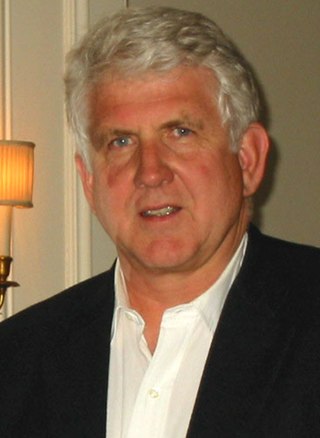
Robert "Bob" Melancton Metcalfe is an American engineer and entrepreneur who contributed to the development of the internet in the 1970s. He co-invented Ethernet, co-founded 3Com, and formulated Metcalfe's law, which describes the effect of a telecommunications network. Metcalfe has also made several predictions which failed to come to pass, including forecasting the demise of the internet during the 1990s.

Robert Elliot Kahn is an American electrical engineer who, along with Vint Cerf, first proposed the Transmission Control Protocol (TCP) and the Internet Protocol (IP), the fundamental communication protocols at the heart of the Internet.

Charles Stark "Doc" Draper was an American scientist and engineer, known as the "father of inertial navigation". He was the founder and director of the Massachusetts Institute of Technology's Instrumentation Laboratory, later renamed the Charles Stark Draper Laboratory, which made the Apollo Moon landings possible through the Apollo Guidance Computer it designed for NASA.

Ray Milton Dolby Hon OBE, HonFREng was an American engineer and inventor of the noise reduction system known as Dolby NR. He helped develop the video tape recorder while at Ampex and was the founder of Dolby Laboratories.

SanDisk is an American multinational computer technology corporation for flash memory products, including memory cards and readers, USB flash drives, solid-state drives, and digital audio players, manufactured and marketed by Western Digital. The original company, SanDisk Corporation was acquired by Western Digital in 2016.
Donald L. Bitzer is an American electrical engineer and computer scientist. He was the co-inventor of the plasma display, is largely regarded as the "father of PLATO", and has made a career of improving classroom productivity by using computer and telecommunications technologies.
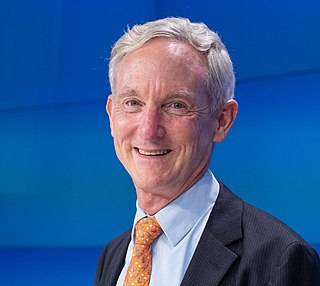
Frank Thomson "Tom" Leighton is the CEO of Akamai Technologies, the company he co-founded with the late Daniel Lewin in 1998. As one of the world's preeminent authorities on algorithms for network applications and cybersecurity, Dr. Leighton discovered a solution to free up web congestion using applied mathematics and distributed computing.
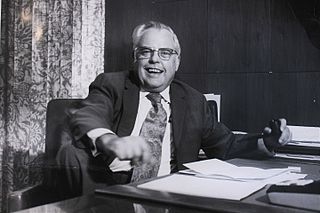
James Hillier, was a Canadian-American scientist and inventor who designed and built, with Albert Prebus, the first successful high-resolution electron microscope in North America in 1938.

George Robert Carruthers was an African American inventor, physicist, engineer and space scientist. Carruthers perfected a compact and very powerful ultraviolet camera/spectrograph for NASA to use when it launched Apollo 16 in 1972. He designed it so astronauts could use it on the lunar surface, making all adjustments inside their bulky space suits. Upon instructions from Carruthers, they used the camera to record the Earth's outermost atmosphere, noting its variations, and also mapped portions of the far-ultraviolet sky recording stars and galaxies, and the gaseous media between them. In 1970, sending his instruments aboard Aerobee sounding rockets, he had demonstrated that molecular hydrogen exists in the interstellar medium. Among numerous citations and awards, in 2003, Carruthers was inducted into the National Inventors Hall of Fame, and he received an honorary doctorate for Engineering from Michigan Technological University. He also was awarded the 2011 National Medal for Technology and Invention from President Barack Obama, "For invention of the Far UV Electrographic Camera, which significantly improved our understanding of space and earth science."
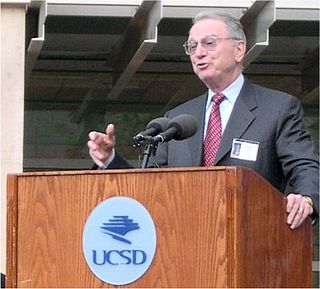
Irwin Mark Jacobs is an American electrical engineer and businessman. He is a co-founder and former chairman of Qualcomm, and chair of the board of trustees of the Salk Institute. As of 2019, Jacobs has an estimated net worth of $1.2 billion.
Alfred Yi Cho is a Chinese-American electrical engineer, inventor, and optical engineer. He is the Adjunct Vice President of Semiconductor Research at Alcatel-Lucent's Bell Labs. He is known as the "father of molecular beam epitaxy"; a technique he developed at that facility in the late 1960s. He is also the co-inventor, with Federico Capasso of quantum cascade lasers at Bell Labs in 1994.

Roger Lee Easton, Sr. was an American physicist and state representative who was the principal inventor and designer of the Global Positioning System, along with Ivan A. Getting and Bradford Parkinson.

George Harry Heilmeier was an American engineer, manager, and a pioneering contributor to liquid crystal displays (LCDs), for which he was inducted into the National Inventors Hall of Fame. Heilmeier's work is an IEEE Milestone.
The IEEE Reynold B. Johnson Data Storage Device Technology Award was a Technical Field Award of the IEEE that was established by the IEEE Board of Directors in 2004 and was discontinued in 2011. The award was presented annually from 2006–2010 for outstanding contributions to the advancement of information storage, with an emphasis on technical contributions in computer data storage device technology. The award was named to honor Reynold B. Johnson.
Haren S. Gandhi was an American inventor and engineer, a recipient of the U.S. National Medal of Technology and Innovation, noted for his research and inventions in the field of automotive exhaust catalysts. Gandhi was elected to the National Academy of Engineering in 1999 "for contributions to the research and development of automotive catalysts". Gandhi held 61 U.S. patents. He was also the director of chemical engineering and a Henry Ford Technical Fellow at the Ford Motor Company. President George W. Bush presented Gandhi with the National Medal of Technology and Innovation at the White House in 2003. The National Academy of Engineering called Gandhi "one of the world's foremost authorities in the area of automotive emissions control".

Harold Vincent Poor FRS FREng is the Michael Henry Strater University Professor of Electrical Engineering at Princeton University, where he is also the Interim Dean of the School of Engineering and Applied Science. He is a specialist in wireless telecommunications, signal processing and information theory. He has received many honorary degrees and election to national academies. He was also President of IEEE Information Theory Society (1990). He is on the board of directors of the IEEE Foundation.
Benjamin Abeles was an Austrian-Czech physicist whose research in the 1960s in the US on germanium–silicon alloys led to the technology used to power space probes such as the Voyager spacecraft. He grew up in Austria and Czechoslovakia and arrived in the UK in 1939 on one of the Kindertransport missions. He completed his education after the war in Czechoslovakia and Israel, obtaining a doctorate in physics. He then lived and worked as a research physicist in the US and retired in 1995. His honours include the 1979 Stuart Ballantine Medal and his induction into the New Jersey Inventors Hall of Fame (1991).

Robert Vince is an American scientist known for his contributions to the research in the area of drug design. He is currently the director and professor at the Center for Drug Design at the Academic Health Center for the University of Minnesota.

Sanjay Mehrotra is an Indian-American business executive and the CEO of Micron Technology. He was a co-founder of SanDisk, where he served as president and CEO from 2011 until its acquisition by Western Digital in 2016.
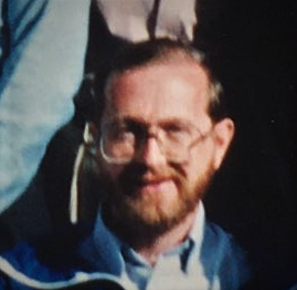
David A. Thompson is an American electrical engineer and inventor with a long career at IBM. He is noted for his many contributions to magnetic recording technology. Thompson was inducted into the National Inventors Hall of Fame for the invention and development of the thin-film inductive head and the magnetoresistive read head. These heads are now ubiquitous in all hard-disk drives and magnetic tape recorders.














